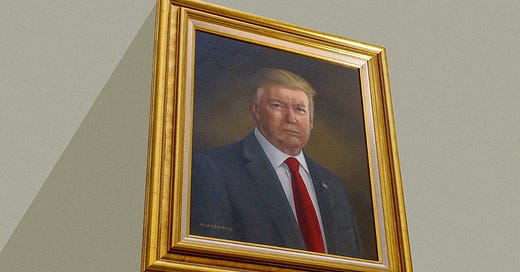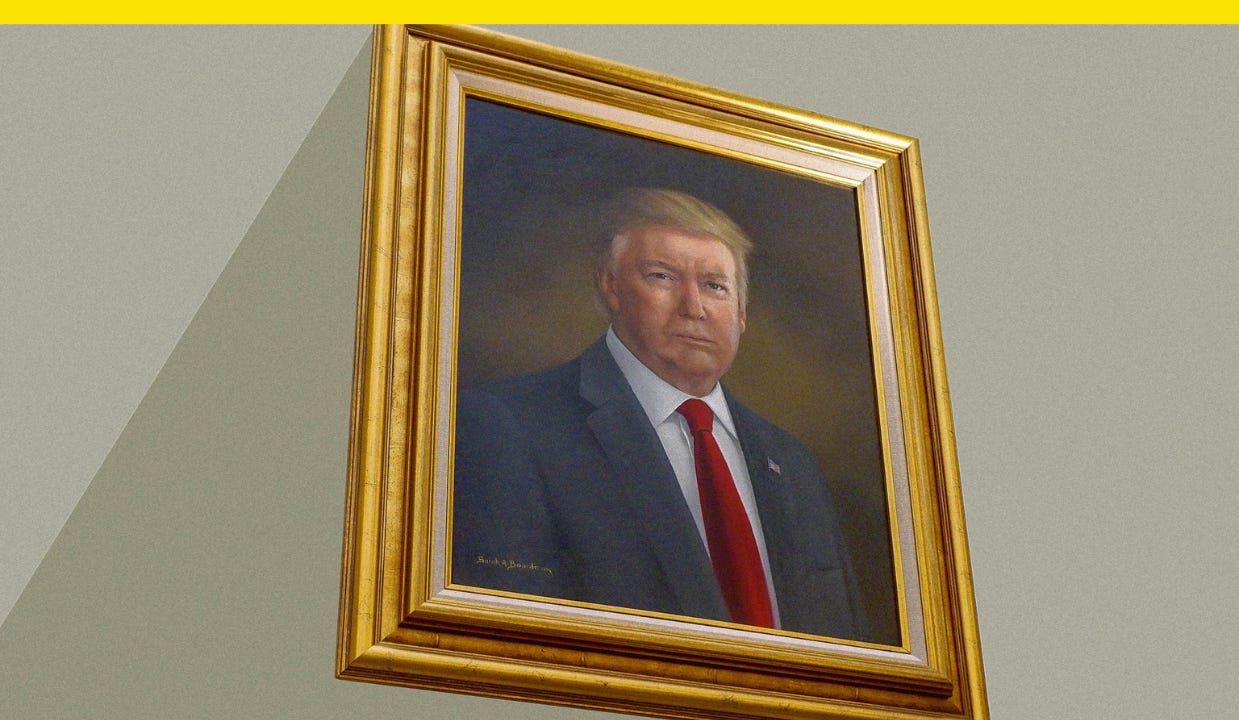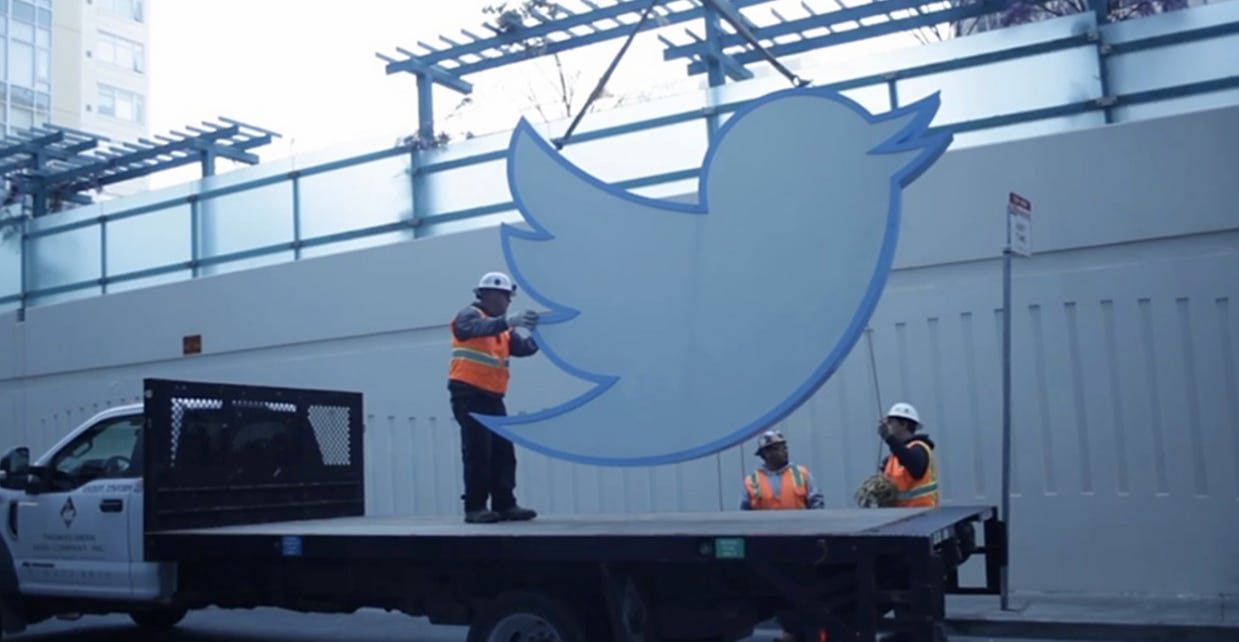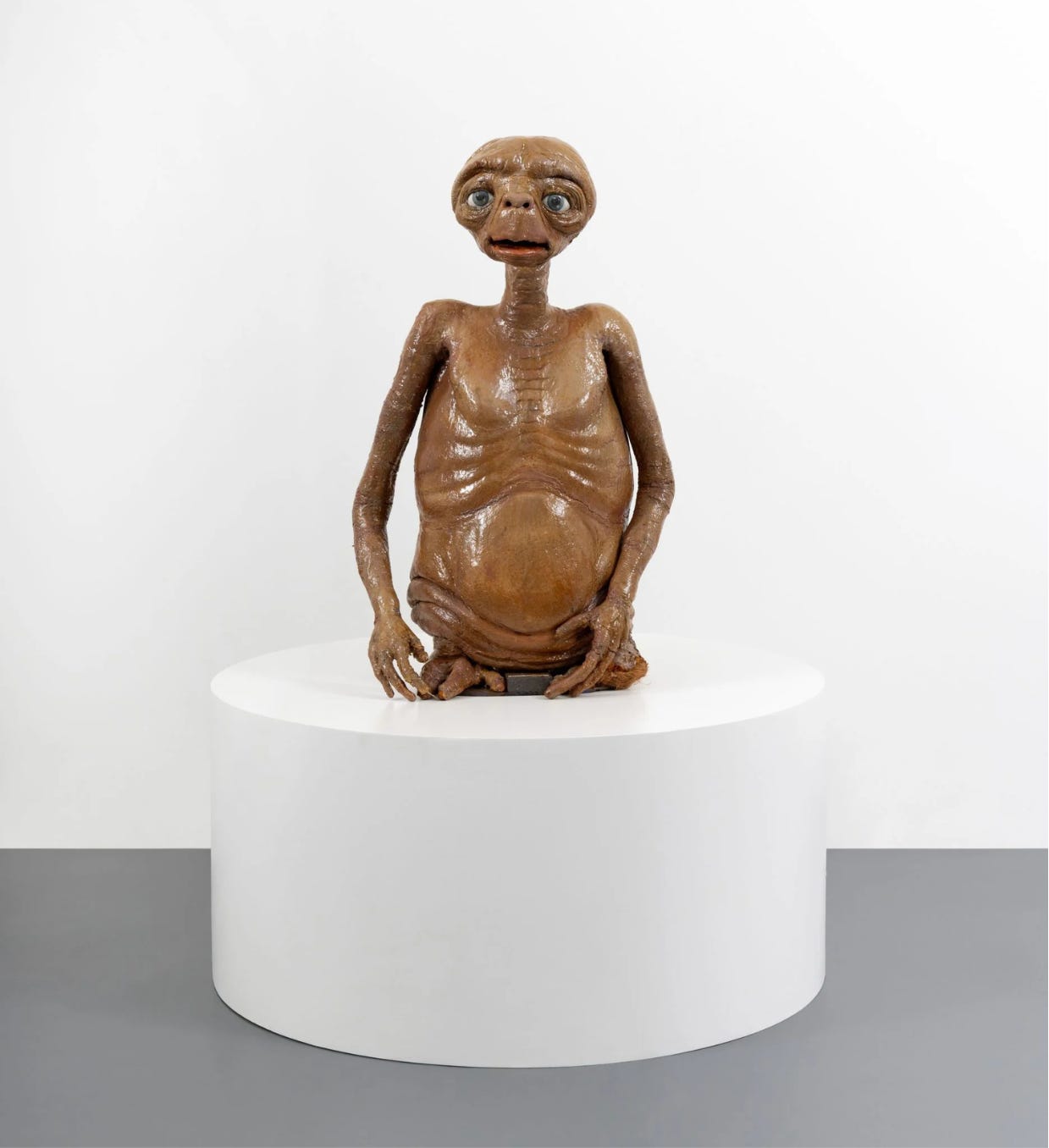Trump doesn’t like this portrait of himself. There’s science behind why.
Plus: A sign of the old Twitter bird logo just sold at auction
Hello, in this issue we’ll look at why Trump hates his portrait in Colorado, and how much the long lost logo for the social network previously known as Twitter just sold for and what it says about the end of an era.
Scroll to the end to see: the alien model that’s looking for a new home 👽
Trump doesn’t like this portrait of himself. There’s science behind why.
War is raging in the Middle East, peace is uncertain in Europe, and investors and consumers are responding to threats of tariffs with sell-offs and boycotts. But President Donald Trump is focused on what matters to him: his self-image.
Like a friend asking you to untag them from a photo on social media that they find unflattering, Trump isn’t happy with an artist’s depiction of him — and wants the painting taken down.
“Nobody likes a bad picture or painting of themselves,” Trump wrote in a social media post Sunday about the painting, which was added in 2019 to a collection of presidential portraits at the Colorado State Capitol building in Denver. He claimed the portrait “was purposefully distorted to a level that even I, perhaps, have never seen before.”
The portrait was painted by Sarah Boardman, a Colorado Springs artist who told the Denver Post in 2019 that she painted both Trump’s and former President Barack Obama’s portraits to appear intentionally apolitical. Boardman did not respond to a request for comment, and state lawmakers said Monday they would take the painting down.
“In today’s environment, it’s all very upfront; but in another five, 10, 15 years, he will be another president on the wall,” Boardman said at the time. “And he needs to look neutral.”
It’s unclear why Trump is complaining about the portrait now, six years after it was first displayed. But Trump’s aversion to his portrait is actually human nature. Scientists have found that humans tend to dislike photographs of themselves for two primary reasons: One, humans prefer images of themselves that they see often — say, their face in a mirror. A portrait or a photograph that depicts a person from an unfamiliar perspective can lead to feelings of discomfort.
Then there’s the phenomenon of “self-enhancement,” which describes the tendency to evaluate our “own traits and abilities more favorably than is objectively warranted.” According to a paper published in the Society for Personality and Social Psychology, when presented with two images — one untouched photograph and one enhanced for attractiveness — respondents tended to identify with the enhanced photo. In other words, we tend to think we look better than we actually do.
This is almost certainly what’s going on in this case. After working in the public eye for decades as a celebrity, reality-TV-show host, and politician, Trump is particularly attuned to his appearance. But he also takes great pains to control his image. He — and his supporters — are not shy about altering imagery to depict him in an artificially flattering light. Trump likes images of himself that show him as strong. And he likes images that he can approve (see his official White House portraits).
Boardman’s painting violates all of Trump’s preferences: the soft-focused lighting, the jawline, the swept-over hair. Boardman’s portrait makes Trump look like just another guy in a blue suit, and he can’t stand that.
Previously in YELLO:
A sign of the old Twitter bird logo just sold at auction
The blue Twitter bird sign that once was once mounted on the exterior of the San Francisco headquarters of the social media company now known as X sold last Thursday at auction for $34,325, failing to reach an estimated bidding price of $40,000.
Nicknamed “Larry,” after Boston Celtics star Larry Bird, the 560 lb. logo was one of two displayed on the building before the company rebranded. Elon Musk, the world’s richest man and a “special government employee” overseeing aggressive cuts to the federal government for Trump, bought Twitter in 2022 and renamed it to X the following year complete with a new, worse logo.
The rebrand and new ownership has proven abysmal for the company’s worth. As of last December, the value of X had fallen 72% from what Musk paid for Twitter, according to a valuation from Fidelity, an investment services company. The lost brand equity that’s come from removing the blue bird logo and old name have also proven costly.
It’s AP style to refer to the social network on first reference as “X, formerly known as Twitter.” As “X” is both new and less distinctive than “Twitter,” readers may be less familiar with its new single-letter name. The same can be said of the old versus new logos. RR Auction, the auction house that sold the sign, likened the old Twitter logo to the logos of some of America’s most iconic brands.
“Although Twitter and its light blue bird have since retired, the symbol remains an icon of tech and social media history, an instantly recognizable emblem in the same league as Nike or Apple Computer,” the auction house says in its listing. It’s a symbol that represented the company “from 2012 to 2023, an 11-year span representing Twitter’s most popular and influential period.”
After buying the social network that would become X, Musk turned the app into a pro-Trump site that amplified his own posts, ended unpaid verification, and became a more accommodating platform for right-leaning news influencers and a less accommodating one for news sites. In a bit of mutual admiration this month, Trump has promoted Musk’s cars on the White House grounds while Musk’s political action committee has run more than $200 million in pro-Trump ads on X. X as it is now is associated with Musk, Trump, DOGE, and MAGA while Twitter is now nostalgia, associated with a previous era when it was publicly owned and public opinion of social media was more positive.
The giant sign that just sold is now a piece of history (not to mention one that the new owner is now responsible for paying shipping costs on, per its listing). But it’s also a reminder of a time before social networks felt as politicized and as heavily influenced by their partisan owners as they do today.
Have you seen this?
Liberal group warns Democratic leaders over their strategy against Trump. A memo from the progressive organization MoveOn sent to Democratic leaders in Congress cautioned that grassroots volunteers and donors will stop helping the Democratic Party if it doesn’t do more to obstruct Trump. [Politico]
Trump Media shares rise on Crypto dot com ETF partnership. The company that owns Trump’s Truth Social platform aims to launch exchange-traded funds, or ETFs, with a “Made in America” focus. Shares are up, but details are scarce. [Fast Company]
The original “E.T.” model from the 1982 film seeks a new home. Designed and created in 1981 by practical effects maestro Carlo Rambaldi, the screen-used figure has landed on the block at Sotheby’s. [Artnet News]
Inside Trump’s Oval Office makeover. When someone takes the Declaration of Independence out of the vault and exposes it to damaging light before comparing the historic document to their stunt to rename the Gulf of Mexico, believe them. [Whig]
History of political design
Anti-Dole smoking button (1996). Then-President Bill Clinton campaigned on ending cigarette ads that targeted kids during the 1996 presidential campaign, and it was a particularly effective line of attack against Republican presidential candidate Bob Dole, who accepted donations from tobacco companies and once said while defending cigarettes, "A lot of other things aren't good... Some would say milk's not good."
Portions of this newsletter were first published in Fast Company.
Like what you see? Subscribe for more:











